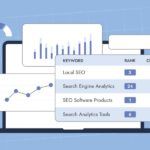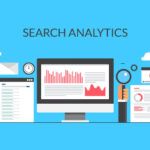
You’ve poured everything into your eCommerce store. You found the right products, built a beautiful website, and spent late nights on order processing. But keeping up with the competition feels like a race you can’t win.
What if you had a secret weapon working for you 24/7? That is what true eCommerce AI Optimization is all about. It is not about robots taking over, but about using smart technology to give your customers what they want before they even ask.
You will learn how you can use the power of artificial intelligence to create a better customer experience, automate tedious tasks, and grow your sales. Proper eCommerce AI Optimization can really change the game for your ecommerce business.
Table of Contents:
- What Exactly is eCommerce AI Optimization?
- Supercharge Your Customer Experience with AI Personalization
- Using AI to Price Your Products Smarter, Not Harder
- Let AI Handle Customer Service (So You Don’t Have To)
- AI-Driven Marketing Strategies
- Your Guide to Practical eCommerce AI Optimization
- Behind the Scenes: AI for Inventory and Fraud
- Conclusion
What Exactly is eCommerce AI Optimization?
Let’s clear the air. When you hear “AI,” you might picture something from a science fiction movie. The reality is much simpler and way more helpful for e-commerce businesses.
Think of it as having a team of brilliant analysts who never sleep. Using machine learning algorithms, they analyze vast amounts of customer data. They watch how customers interact with your site, learning what people like and dislike.
This technology can spot patterns you would never see on your own, offering deep insights into customer behavior. Then, an AI tool uses that information to make tiny, automatic improvements across your whole ecommerce store. The goal is to make every visitor’s shopping experience feel completely personal.
Supercharge Your Customer Experience with AI Personalization
Have you ever shopped online and felt like the store just “gets” you? That is the magic of personalization. AI takes this to a whole new level for your user experience.
It is about showing the right personalized product to the right person at the right time. This simple idea can have a huge impact on your bottom line and conversion rates. Customers who feel understood are much more likely to buy and less likely to contribute to cart abandonment statistics.
AI-Powered Product Recommendations that Actually Work
You have seen those “you might also like” sections. Sometimes they are helpful, but often they miss the mark completely. Standard recommendation tools just look at what other people bought.
AI goes much deeper by leveraging machine learning. It analyzes an individual’s clicks, their time spent on certain product pages, and their purchase history. According to research from McKinsey, personalization can lift revenues by 5 to 15 percent.
The system learns each person’s preferences and can then recommend products that genuinely match their style or needs. This makes product discovery feel less like a search and more like an adventure. Advanced systems even use visual search and image recognition, allowing a customer to find similar items based on a picture they upload.
Dynamic Content for Every Visitor
Imagine two different people visit your homepage. One is a new visitor drawn in by your search engine ranking, and the other is a loyal customer who loves a specific brand you sell. Should they see the exact same page?
AI says no. With dynamic content, the experience can change based on the customer journey. The new visitor might see a welcome offer and your bestselling items to improve customer engagement from the start.
The loyal customer could see new arrivals from their favorite brand, making them feel valued. This shows you are paying attention to their individual preferences. Such customization can be extended to email marketing tools, ensuring every communication is highly relevant.
Using AI to Price Your Products Smarter, Not Harder
Pricing can feel like a guessing game. Are you charging too much and scaring away buyers? Or are you leaving money on the table?
AI helps fix this with AI-driven dynamic pricing. This does not mean prices change wildly from minute to minute. It means they adjust based on real data to find the optimal pricing.
An AI tool can look at competitor prices, current market demand, and your own stock levels. It then suggests the best price to stay competitive and maximize revenue. For instance, AI-driven dynamic pricing might suggest a slight increase during a holiday rush, while it may recommend a discount to clear out old stock and avoid wasted spend.
This allows your pricing strategies to be flexible and data driven. You are always adapting to the market without having to check prices manually every day. This intelligent automation saves time and improves profitability.
Below is a simple example of how AI might adjust prices for a popular T-shirt:
| Situation | Manual Price | AI Suggested Price |
| High Demand / Low Stock | $25.00 | $28.50 |
| Competitor Sale | $25.00 | $23.00 |
| Slow Sales Period | $25.00 | $21.00 (with promotion) |
| New Style Arriving | $25.00 | $19.50 (to clear old inventory) |
Let AI Handle Customer Service (So You Don’t Have To)
Your customers have questions at all hours of the day. It is impossible for you or a small team to be available 24/7. This is where conversational AI in the form of chatbots is incredibly helpful.
Modern chatbots are far from the frustrating bots of the past, thanks to advances in natural language processing. They can use natural language to instantly answer common questions like “Where is my order?” or “What is your return policy?”. This frees up your human support team to handle more difficult problems that need a personal touch.
They can even guide shoppers to the right products. By asking a few simple questions, a chatbot can act as a personal shopper, improving product discovery. This language processing capability helps people find what they need faster and can lead to more sales and better customer engagement.
AI-Driven Marketing Strategies
Beyond the storefront, AI is a powerful force in digital marketing. These AI tools assist in crafting campaigns that resonate with your audience on a personal level. This leads to better organic traffic and more effective advertising.
One major benefit is the ability to create SEO-friendly product descriptions and product titles. An AI tool can analyze top-ranking pages and generate compelling, keyword-rich text. This saves countless hours and helps your products get seen by more people on search engines.
AI also analyzes data from social media to provide deep insights into consumer trends and sentiment. This helps you understand what your audience is talking about and what they want to see. These actionable insights can inform your content strategy, product development, and overall growth strategies.
Your Guide to Practical eCommerce AI Optimization
Getting started with AI might sound complicated, but you can begin with a few simple steps. You do not need a team of data scientists to make it work. The best approach is to start small and focus on your biggest challenges first.
Step 1: Figure Out What You Need
First, take a look at your business. Where are you struggling the most? Are your conversion rates low, or are too many people leaving your site with items in their cart?
Is your customer support team overwhelmed with questions? Maybe you feel like your marketing tools are not getting the results you want. Identify one specific problem you want to solve to improve your ecommerce store.
Do not try to do everything at once. Focusing on a single goal makes it much easier to choose the right optimization tool and measure your success.
Step 2: Find the Right Tools
Once you know your goal, you can look for AI tools that can help. Many eCommerce platforms like Shopify or BigCommerce have app stores filled with AI-powered solutions. You can find tools to recommend products, personalize email marketing, or automate customer service.
Look for apps with good reviews and clear pricing, and always review the privacy policy to understand how customer data is handled. Many AI tools offer free trials, so you can test them out before you commit. The goal is to find an ai tool that integrates seamlessly with the systems you already use.
The process does not need to be a major overhaul. It can be as simple as adding a new piece of software. Many small ecommerce businesses are already finding success with accessible marketing tools and AI solutions.
Step 3: Integrate and Test
After you pick a tool, it is time to put it to work. Follow the instructions to get it set up on your site. The most important part of this step is testing.
You need to know if the artificial intelligence is actually helping. Look at your data and run A/B tests. Is your conversion rate going up? Are customers spending more on average?
You can also run tests where half your visitors see the AI features and half do not. This will give you clear proof of what is working. Always trust the data to guide your decisions for your ecommerce business.
Behind the Scenes: AI for Inventory and Fraud
Some of the most powerful uses of AI happen where customers can’t even see them. It can improve how your business runs from the inside out. This makes your operations smoother and more profitable.
Predictive Inventory Management
Running out of a popular product is a terrible feeling. You lose sales and disappoint customers. On the other hand, having too much stock ties up your cash in your supply chain.
AI helps you find the perfect balance with inventory management optimization. It analyzes past sales, seasonal trends, and even external factors like upcoming holidays through demand forecasting. It then predicts how much of each product you will need, helping you maintain optimal stock levels.
This means you can order the right amount of stock at the right time. Better supply chain management leads to more efficient order fulfillment. This leads to better cash flow and happier customers.
Fighting Fraud with Smarter Systems
eCommerce fraud is a serious problem that can cost you a lot of money. Criminals are always finding new ways to cheat the system. Traditional fraud prevention relies on a list of rules, but AI offers much smarter fraud detection.
An AI system can analyze thousands of data points for each transaction in real time. It looks for unusual patterns that might indicate fraud, such as checking IP addresses against known fraudulent locations. It can spot when a purchase is made from an unusual location or if an order size is strangely large.
This intelligent automation learns and gets better over time. It protects your business from losses without flagging legitimate customers. This builds trust and secures your bottom line.
Conclusion
Getting into AI does not have to be overwhelming. It is a powerful optimization tool that is more accessible than ever for helping businesses of all sizes. By starting small and focusing on specific problems, you can make big improvements.
If you are looking for an eCommerce SEO agency to help your full digital marketing strategy, give us a call today!
AI is here to help you understand your customers on a deeper level. It automates tasks so you can focus on your broader growth strategies. Embracing eCommerce AI Optimization is about working smarter to build a stronger, more profitable business.












